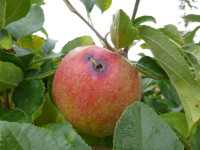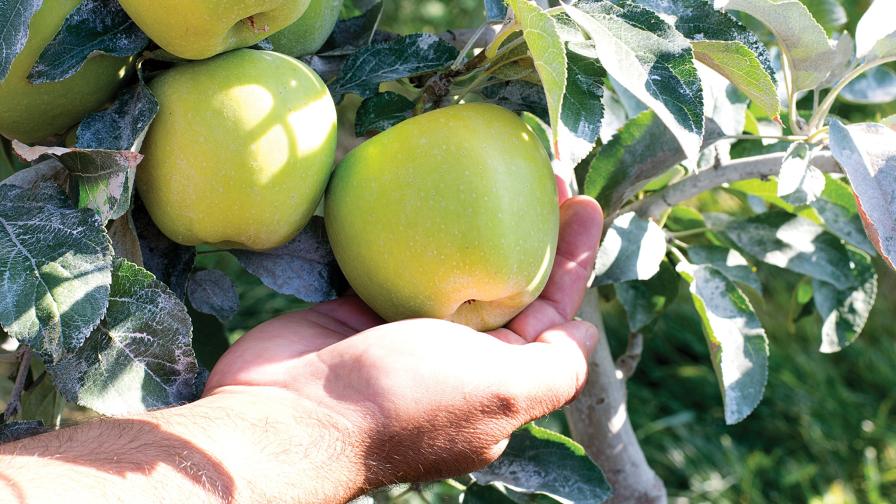Limiting Bird Damage In Orchards

Fruit growers across the country face crop losses almost every year due to bird damage. Unlike most insect pests, which may target a specific crop or make their presence known at a particular time, bird damage can happen at any time.
With funding from USDA’s Specialty Crop Research Initiative, researchers from Michigan State University, Cornell, Washington State University, Trinity Western University, Oregon State University, and other groups such as the National Wildlife Research Center, are tackling this issue. A team of economists, social scientists, and biologists are investigating the economic costs of bird damage to fruit, as well as environmentally sustainable management strategies.
The research is focused on cherries, blueberries, red grapes, and Honeycrisp apples in Michigan, New York, and the Pacific Northwest. Trials addressing bird damage severity, and potential management, are taking place both at research farms and at commercial orchards and vineyards.
Upcoming Goals
The project includes five goals:
• Quantify economic consequences of bird damage for producers, consumers, and regional economies
• Determine how bird damage varies within and across spatial scales (orchard, landscape, region)
• Identify amounts of damage attributable to specific bird species
• Investigate consumer responses to management strategies and potential effects on marketing
• Test management strategies for efficacy. The information generated from the first four objectives will be used to determine management strategies to be tested in different crops and regions.
“Most of the goals of the project are on schedule to be met by the end of 2014,” says Catherine Lindell, project coordinator and associate professor in zoology at Michigan State University. “This means we will be able to provide growers with information regarding these goals in outreach materials. We are already providing some of this information to growers in talks at meetings.”
One point Lindell stresses is the importance of developing individual management strategies for individual fruit blocks. “One-size-fits-all is not the most effective way to go,” she says. “Each block will have different characteristics and be embedded in a landscape that differs from those of other blocks. We will have more details to provide after the next two field seasons.”
Bringing Evidence
One major aspect of this project will be coordinating sampling protocols across three different fruit-growing regions of the country, so that researchers can better compare results. For example, says Lindell, “if we find that a management strategy is more effective in one region than another, this is likely a real difference, and not a result of different protocols being used in different studies.” Ideally this will give growers more confidence in making decisions regarding bird management.
Lindell also notes that many relatively simple ideas about bird deterrent strategies have not been well-tested with replicated, large-scale trials. While it makes sense that several strategies used simultaneously should be more effective than just one, the evidence is very limited. As an example, most growers and Extension personnel believe that bird damage is greater at edges compared to interiors of blocks. However, few replicated studies have quantified these differences. “Gaining concrete information about the difference between damage on edges and interiors will allow growers to take this into account when determining management strategies.”
One other effort in the project will be determining simple ways in which growers could increase the likelihood of attracting beneficial birds to their fields. For example, house wrens, which only eat insects, are quite aggressive toward European starlings, an important fruit consumer in some crops. “If house wrens can be attracted to orchards and vineyards with nest boxes, that would be a helpful outcome,” says Lindell.
Lindell is hopeful the debate over the next Farm Bill will be resolved soon so that funding can continue. “The type of large-scale project we are doing, coordinated across multiple regions of the country, is only possible with the type of support we have received,” she says. “We would like to take what we are learning now and extend that to future field seasons. This will only be possible with continued research support.”
Getting The Word Out
So far progress updates for this project have taken place through presentations and informal discussions at grower meetings. However, project coordinator Catherine Lindell says the results of a survey on damage and economic losses have been analyzed and approved for publication in a professional journal. “Once the publication is official, we will be creating written outreach materials,” she says. In the meantime, growers can learn more by visiting the project’s website, http://birddamagetofruitcrops.info.










